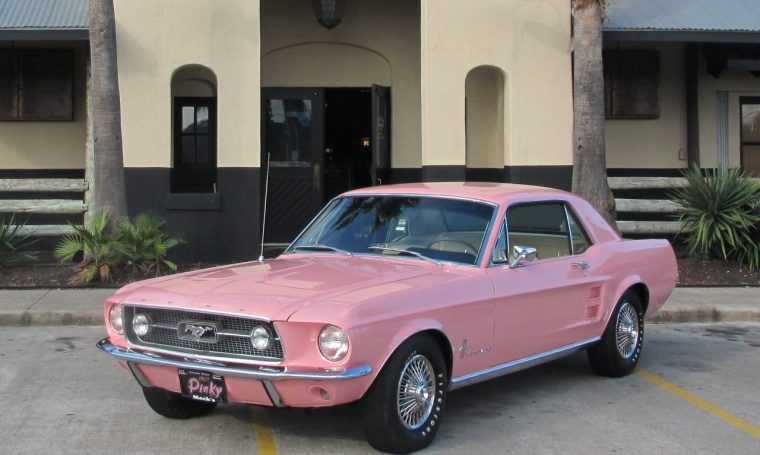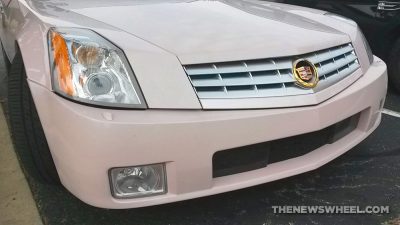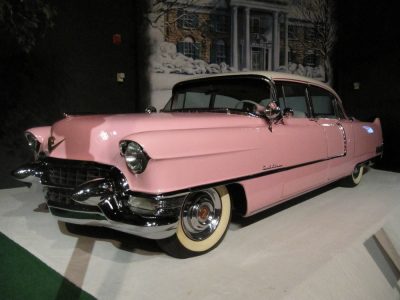Why Are There No Pink Cars?
Three major reasons automakers no longer offer pink paints on vehicles
Over the years, practically every color has been released as a factory-offered exterior paint and has earned its share of fans—except for one color: pink. Despite the exposure that vivid hues like burnt orange, lime green, and even sunshine yellow have received, pink has been predominantly overlooked. Why is that?
Is the absence of pink as a standard car color (only available as an after-market paint) due to gender stereotypes? Are there scientific or business reasons pink has never been a standard car color? Or is it all a conspiracy involving the Mary Kay company?
Why Pinks Cars Aren’t Popular
Pink used to actually be a pretty popular car color half a century ago. It’s now known as the signature color on certain models, such as the 1957 Chevy Bel Air or Elvis’ Cadillac Fleetwood. It’s still a fairly common color in other parts of the world, like Japan, Korea, and Germany. So, why are pink cars so rare in the United States? After all, if a pink car is good enough for Homer Simpson, shouldn’t it be good enough for the rest of us?
1. It’d Be Unwise for Business
Waves of economic recessions other the latter decades of the 20th century and the beginning of the 21st century have conditioned consumers to play it safe and choose conservative colors on their cars (choosing a neutral color is smart for broad resale appeal). Thus, after years of declining sales of pink cars and no resurgence in demand to produce them, automakers decided that investing in pink paints wasn’t worth it.
A lot of research, testing, and studying of R.O.I. go into mixing and marketing the most widely appealing car colors. That’s why paint options typically don’t stay consistent across the board year after year, and are slightly tweaked every so often. Automakers go so far as to study trends like the fashion choices of average consumers to find the most widely appealing shades.
In the past, models like the Geo Storm and Geo Trackers came in pink and purple color options to appeal to young female buyers, but eventually automakers saw that producing “girly” colors to market to women wasn’t a wise business move. Why limit your buyer base when you can just find a way to market the standard, neutral colors you already make to women instead of offering hues just for them?
Automakers assume that if someone really wants a pink car, they’ll pay the money to have it painted after-market.
2. It’s a Divisive Color
One of the main reasons today’s vehicle colors are so bland is because they’re inoffensive and easy to agree on. Most vehicle purchases are joint decisions between a couple, and even if one member would like a pink car, the other partner might not. A vehicle’s color has to be one that both partners decide upon. Thus, they typically opt for the most neutral hues. Similarly, if you want to sell your car when you’re done with it, it’s a wise long-term strategy to buy one in an ordinary color (like grey) so it won’t turn off any potential second owners.
Unlike any other color, pink is widely considered “for” one gender only, and that limits the potential consumer base by half. Even if a model were produced in that color, a dealership probably would carry it because it’d potentially be a huge loss.
The Ferrari company has even stated that the color pink isn’t in the brand’s DNA and doesn’t fit into its ethos, so it will never produce a pink car.
3. It’s Considered Juvenile
Even from infancy, we’re conditioned to recognize pink as part of the female identity, so it’s not surprising that we see purchasing a pink car as submitting to regressive gender stereotypes.
The average purchaser of a new car is in their mid-40s. By that age, working women or moms with teenage children would see a pink car as immature. Driving a bright pink car doesn’t give you the perceived reputation of being “professional.” In fact, studies show that most women actually prefer red or blue over pink, and that women’s preferred car colors are not what you’d expect.
While the Chrysler company has bucked the perception of pink as a purely women’s color—famously offering Panther Pink and Furious Fuchsia on its muscle cars—the vast majority of people still think that the color pink is synonymous with adolescent girls.
What do you think? Should cars should be offered in pink? Or is it a better idea to keep pink cars off the streets?

The News Wheel is a digital auto magazine providing readers with a fresh perspective on the latest car news. We’re located in the heart of America (Dayton, Ohio) and our goal is to deliver an entertaining and informative perspective on what’s trending in the automotive world. See more articles from The News Wheel.




